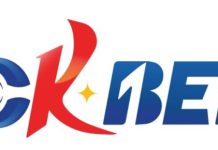Are you looking for the most efficient investment strategies? Look no further! This article will provide you with useful tools to help you get started. Keep reading to learn more!
Candlestick Charts
Candlestick graphs are one of the most commonly used tools to help investors make informed decisions about their portfolios. These graphs show the opening and closing prices of a security or asset over a specific time period, and they can be used to identify patterns in price movement that may indicate when it is time to buy or sell. There are several different types of candlestick charts, but all of them display the same basic information. The body of the candle shows the security’s closing price for the given time period, while the wick (or shadow) shows the high and low prices reached during that time period. Some graphs also include a line indicating the average price for that time period. One common use of a candlestick chart is to help investors spot bullish and bearish trends. A bullish trend is indicated by a series of consecutive green candles, while a bearish trend is indicated by a series of consecutive red candles. In order to take advantage of these trends, an investor would buy when there is a green candle and sell when there is a red candle. A candlestick graph can also be used to identify reversal patterns, which indicate that a security’s price has reached its peak or trough and is likely to start moving in the opposite direction soon. Some common reversal patterns include head-and-shoulders formations, double bottoms/tops, and engulfing patterns.
Tax Optimization Tools
Tax optimization tools are a valuable resource for investors looking to minimize their tax liability. By understanding the available options and using the right tool for the job, investors can reduce their taxable income and keep more of their money working for them. One popular tax optimization tool is the Roth IRA. Contributions to a Roth IRA are made with after-tax dollars, but withdrawals in retirement are typically tax-free. This can be a powerful way to save for retirement while keeping your taxes low. Another option is the 401(k). Contributions to a 401(k) are made with pre-tax dollars, meaning you save on your current taxable income. However, withdrawals in retirement are taxed as regular income. This can still be a good option for those looking to save for retirement while minimizing their current tax burden. Another important factor to consider when optimizing your taxes is asset location. Assets that generate high levels of taxable income should be held in accounts that offer tax breaks, such as IRAs and 401(k)s. Conversely, assets that generate low levels of taxable income can be held in brokerage accounts where there is no immediate tax benefit. Asset location can be an important consideration when constructing an efficient investment strategy.
Tie Ratio
A tie ratio is a comparison of two investments’ returns, with the first investment’s return divided by the second investment’s return. The higher the tie ratio, the more efficient the investment strategy. The goal is to find an efficient investment strategy that will provide a higher return. For example, a portfolio consisting of 50 percent stocks and 50 percent bonds is compared to a portfolio consisting of 100% stocks. The stock portfolio has a higher expected return than the bond portfolio, but it is also more risky. The stock portfolio has a tie ratio of 1.5, while the bond portfolio has a tie ratio of 0.5. This means that the stock portfolio is more efficient than the bond portfolio; it provides a higher expected return for given level of risk.
Useful tools are essential for the most efficient investment strategies. Overall, these tools can help investors save time and money while achieving their investment goals.








